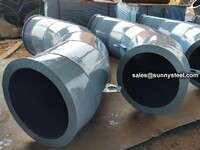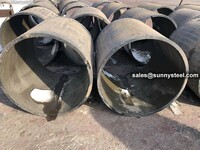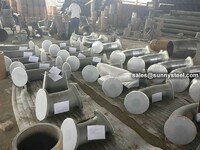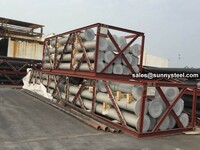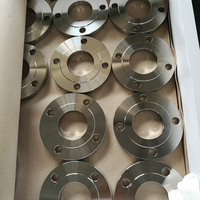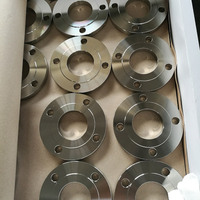Lap Joint Flange
Product Quick Detail
- Minimum Order
- 1
- Place Of Origin
- China
- Packaging
- in wooden boxes
- Delivery
- 15 Days
Specifications
The lap joint flange is practically identical to a slip-on flange except it has a radius at the intersection of the bore and flange face. This radius is necessary to have the flange accommodate a lap joint stub end. Normally, a lap joint flange and a lap joint stub end are mated together is an assembly system.

Standards, Dimensions & Weight
- ASME/ANSI B16.5 Class 150 LJ
- ASME/ANSI B16.5 Class 300 LJ
- ASME/ANSI B16.5 Class 600 LJ
- ASME/ANSI B16.5 Class 900 LJ
- ASME/ANSI B16.5 Class 1500 LJ
- ASME/ANSI B16.5 Class 2500 LJ
Lap joint flange draws :
Lap Joint flanges
Size: 1/2” to 60”, DN 12mm to DN 1500mm view...
Pressure class: Class 150 to Class 2,500, PN 2.5 to PN 250
Facing: RF / RTJ
Cabon steel: A105, A350 LF2
Stainless steel: A182 F304/F304L/F316/F316L/F321
Alloy steel: F11, F12
Packing: plywood case and plywood pallet
Usage:
Flanges are integral parts of many engineering and plumbing projects. In many applications, engineers need to find a way to close off a chamber or cylinder in a very secure fashion, usually because the substance inside must differ from the substance outside in composition or pressure.
They do this by fastening two pieces of metal or other material together with a circle of bolts on a lip. This “lip” is a flange.
Plumbing
You can connect two sections of metal piping by soldering or welding them together, but pipes connected in this way are very susceptible to bursting at high pressures. A way of connecting two sections of pipe more securely is by having flanged ends that you can
- Country: China (Mainland)
- Business Type: Manufacturer
- Market:Americas,Asia,Europe,European Union
- Founded Year:20000
- Address:No. 273, Siping Road, Shanghai
- Contact:sum xu
Other products from Sunny Steel Enterprise Ltd.
Relate products of Lap Joint Flange
Lap Joint Flanges
Product description Lap Joint Flanges Features Forming: forged Stainless Steel Lap Joint Flanges Lap Joint Flanges Materials Stainless Steel: OCr18Ni9, 0Cr18Ni9Ti, 1Cr18Ni9Ti, 0Cr18Ni12Mo2Ti, 00Cr19Ni10, 00Cr17Ni14Mo2, ASTM A182-F304, F304L, F304H, F316, F316L, F321, F321H, ...
Lap Joint Flanges
Product description Lap Joint Flanges Features Forming: forged Stainless Steel Lap Joint Flanges Lap Joint Flanges Materials Stainless Steel: OCr18Ni9, 0Cr18Ni9Ti, 1Cr18Ni9Ti, 0Cr18Ni12Mo2Ti, 00Cr19Ni10, 00Cr17Ni14Mo2, ASTM A182-F304, F304L, F304H, F316, F316L, F321, F321H, ...
High Strength flange use titanium stub end titanium machined GR2 joint sleeve stub end fittings
产品描述 规格 物品 高强度法兰使用钛短管端钛机加工 GR2 接头套筒短管端配件 材料 钛 结束 抛光 类型 存根端 起源地;原产地 中国 陕西 品牌 天邦 型号 结核病 包装 可定制,纸箱,木箱 应用 ...


